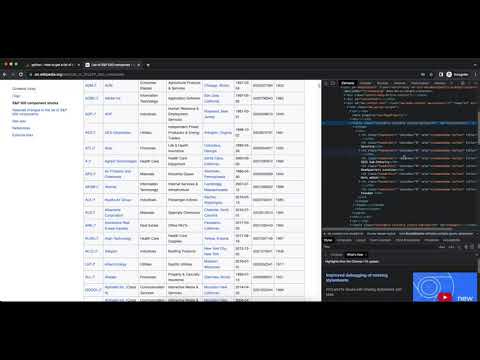For about a year now, we have been continuously pushing the difficulty level on implementing your own quant systems. It’s been about a year since QT101 - and now there is QT201,QT202,QT203,QT301,QT401,QT410, and so on. For many who have followed us from the start, this was a delightful journey. For those who came in between, it might just have been a confusing pile of text.
Let’s take it to the beginning.
As a beginner trader (say, you are a year 2 CS student with the hopes of becoming a quant), the industry is a scary place. Mostly noise - and unless you are able to land an internship at highly coveted spots, learning how to do systematic trading feels like swimming in the atlantic ocean.
To get an internship means you are squeezing in next to the competitive programmers (with professor recommendations) in roles that have abysmal acceptance rates. Interviews full of programming, combinatorics and linear algebra questions. In my college, there were particular quant funds that interviewed students from a particular programming module which itself had students cherry picked.
So you give up hopes, turn your attention to YouTube and watch the Ichimoku Cloud videos and RSI stochastic oscillator setups. One doesn’t work, and you do more research. Ahh, combining signals can help. And then that doesn’t work out either.
Perhaps you should take a step back.
I am going to skip the whole stuff on ‘there is a better way to make money’. There is, but many do it because they think it is sexy. Or so we thought. I mean take a step back, and look at the big picture. How do we know where we should be looking to improve ourselves?
Are there any Elliot Wave theorists working in Jane Street? Jump? Citadel? Goldman? OKX? Do you see a MACD analyst in the Barclays Hedge Fund Database?
Or are there volatility traders, cta momentum funds and curve arbitrage funds?
Studying hard does not mean it isn’t a waste of time. Studying various MACD strategies is like burning the midnight oil on questions that your professor labeled NIS (not in syllabus)
The first video on ‘macd strategy’ on YouTube yields 2700000 views. In comparison, ‘yield curve arbitrage’ yields 89000. That is the unfortunate state of our industry.
Obviously, you are not going to have a CTA fund ready and charged from the get go. Surely, there is an intermediate between where you are now, and that ‘institutional’ set up you dreamed of. So how do you get to the next level?
Read widely, deeply, and do the research.
Read papers from sources that aren’t a waste of time. Read books from practicioners. Go to AQR, NBER, Rob Carver, Giuseppe Paleologo and try to implement the ideas if you have the skill. Or work on the skills to understand them. Eventually, you will find a niche market where your skills are sufficient to extract some value. Reading gives you ideas. Ideas give you action. Action gives you feedback. Feedback makes you better.
Work with Discipline
This does not mean ‘be a disciplined trader’. A disciplined losing trader just loses money all of the time. By this, I mean -
work with frameworks, systems, and data.
Whenever you can test an idea with data, test it. If the idea deserves more, put it into a framework. Multiple frameworks around trading decisions form a system. You need tracking, statistics, understanding and insight. ‘But there is a discretionary overlay’ is poor excuse for not testing.
Let’s say you have some ‘strategy’ that makes BUY trades when MACD crosses + X intuition. Okay, are you sure your priors are helpful? P( return | X ) > P(return)? Are you so sure you are value adding? Here are my beginner lectures on building a simple quantitative framework:
Quantify
Quantify your edge. Quantify your signal. Quantify your sizing.
If you can’t explain your edge, you don’t have an edge. If you don’t have a model for your edge, you have noise + fees.
Understanding the EV of your trade, and your costs relative to that, is your return against (partial) risk. That is all you need to know. You want to extract your edge, and everything else is risk. Your sizing depends on this relative value. Risking 100bps for a trade instead of 50bps because you are ‘twice as confident’ is not a quantification. A take-profit to stop-loss ratio of 3:1 is not a quantification. You just skewed your distribution.
What is the theoretical EV? What are the random variables in your EV model? Are they estimatable, and if so, what are their statistical errors? If not, do you have a heuristic to remove these terms by approximation? In my funding arbitrage lectures, I demonstrate coming up with a theoretical EV model, and then reducing it into a practical EV formula with approximations.
Read, Work, Quantify
Not quite as catchy as Eat, Pray, Love but that is how you improve yourself. Eventually, you will be better. And once you are better, you will either (i) have a system that works or (ii) know enough to be valuable in a team.
If you have done it right, hopefully you have a profitable system. In the worst case, you have a portfolio of projects to showcase considerable skill. Your interest in the industry will not be suspect to any interviewer. Your skills should be polished, or being polished. Either that, or, you did not go hard enough. There are many with this plague called inaction. Countless of times, I have had friends ask me what I do. I explain how easy it would be to implement a trend following system, with their programming ability and reasonable mathematics. I never heard back from them.
Oh, here’s what to do with your Ichimoku Cloud strategy. Shove it up your butt.


